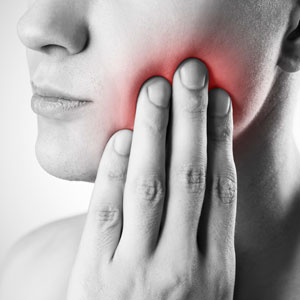TMJ Treatment

Understanding TMJ Disorder
If you experience jaw pain, difficulty chewing, or clicking sounds when you open your mouth, you may have temporomandibular joint (TMJ) disorder. At Bannon Clinic of Chiropractic, we offer non-invasive solutions to relieve discomfort and improve jaw function.
The TMJ connects the jaw to the skull, allowing movement for chewing, speaking, and facial expressions. TMJ disorder (TMD) occurs when this joint becomes inflamed, misaligned, or dysfunctional, leading to pain, tension, and restricted movement.
Symptoms of TMJ Disorder
Symptoms of TMD vary but may include:
- Jaw pain or tenderness
- Clicking, popping, or grinding sounds when opening or closing the mouth
- Difficulty chewing or speaking
- Headaches and earaches, often mimicking migraines
- Facial pain and muscle tightness
- Neck and upper back pain
- Jaw locking or restricted movement
- Tinnitus (ringing in the ears) due to TMJ-related muscle tension
Causes of TMJ Disorder
TMD can be triggered by various factors, including:
- Jaw misalignment: Poor posture, dental issues, or an uneven bite can strain the joint.
- Teeth grinding (bruxism): Excessive clenching and grinding wear down the joint and cause muscle tightness.
- Stress and tension: Emotional stress can lead to jaw clenching and muscle tightness, worsening TMJ symptoms.
- Injury or trauma: A direct impact to the jaw or head, or whiplash from an accident, can misalign the TMJ.
- Arthritis: Degenerative joint conditions such as osteoarthritis or rheumatoid arthritis can contribute to TMJ pain and dysfunction.
- Poor posture: Forward head posture and prolonged screen time can strain the jaw and neck muscles, leading to TMD.
Chiropractic Treatment for TMJ
At Bannon Chiropractic, we offer gentle, non-invasive treatments to relieve TMJ discomfort and improve function, including:
- Chiropractic Adjustments: Correct misalignments in the jaw and cervical spine to restore balance and reduce pressure on the TMJ.
- Soft Tissue Therapy: Reduces muscle tension, breaks up adhesions, and improves blood flow around the TMJ.
- Myofascial Release: Eases tightness in the jaw, facial, and neck muscles, reducing pain and improving range of motion.
- Postural Correction: Helps correct poor neck and head positioning that may contribute to TMJ dysfunction.
- At-Home Exercises: Jaw stretching and relaxation techniques enhance mobility and comfort while reducing tension.
- Stress Management Techniques: Guidance on reducing jaw tension through mindfulness, relaxation, and stress-reducing activities.
FAQs About TMJ Disorder
Can chiropractic care permanently fix TMJ?
Is TMJ disorder linked to headaches?
Should I avoid certain foods if I have TMJ pain?
Contact Us Today
Don’t let TMJ discomfort interfere with your life. Call Bannon Clinic of Chiropractic today to start your recovery journey!

